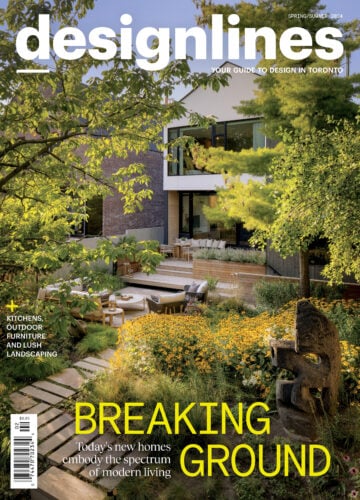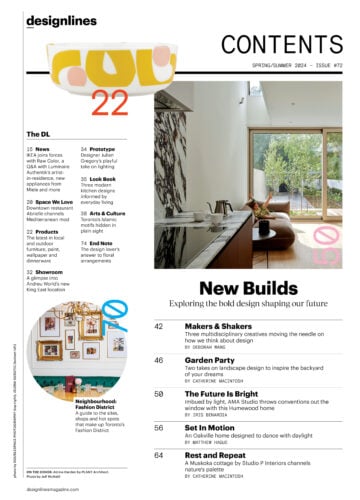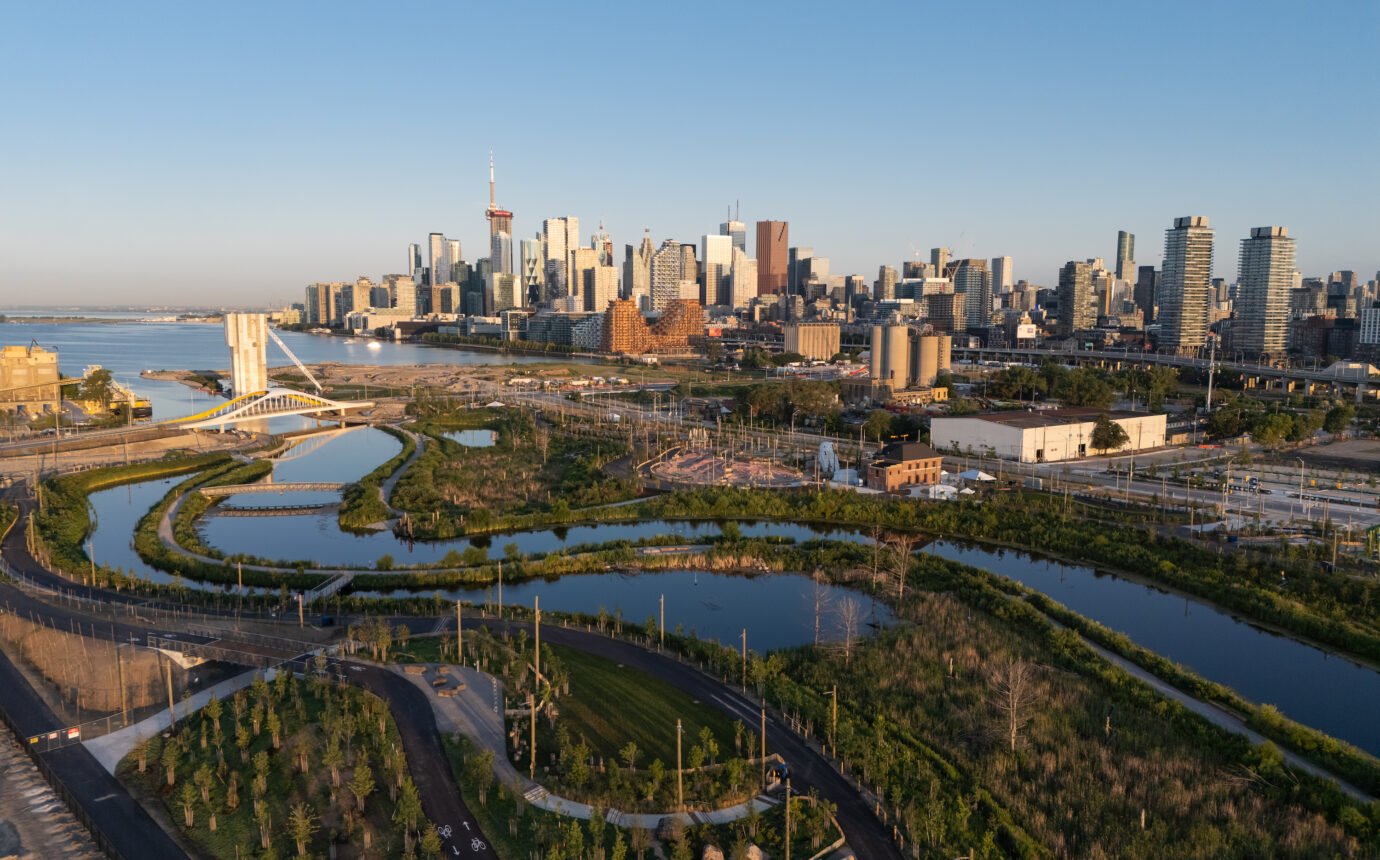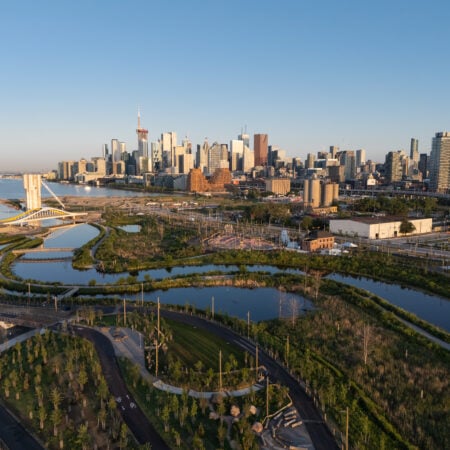WoodGate: A New Beacon for Steeltown
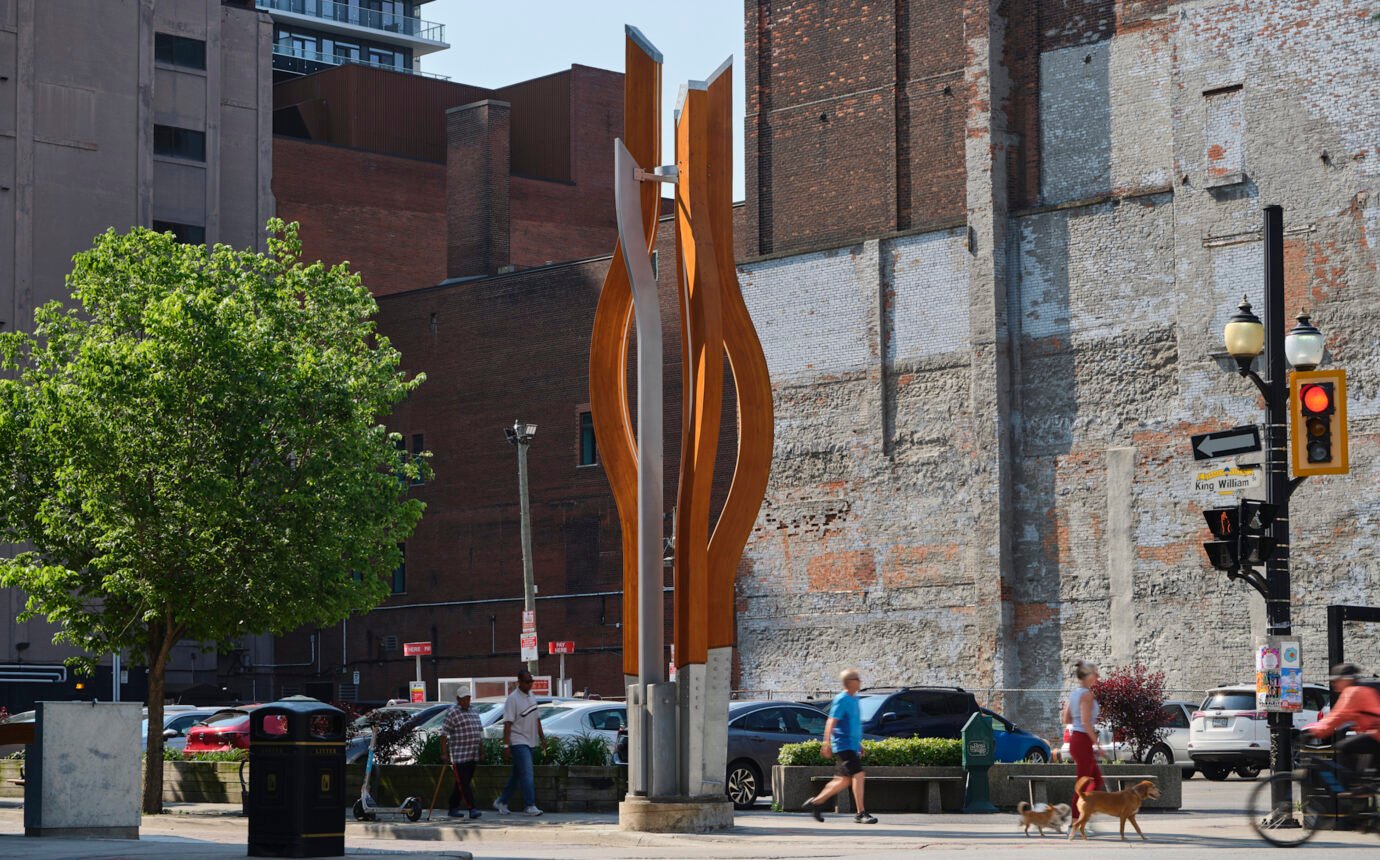
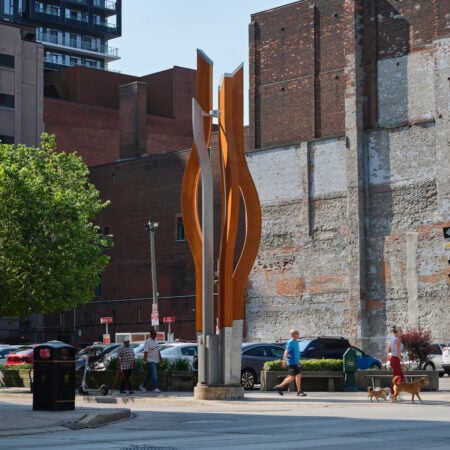
Downtown Hamilton has a new landmark, and it’s not just another piece of street furniture
Rising from the intersection of King William and James like a set of sculpted timber flames, WoodGate is the kind of urban intervention that manages to be both poetic and practical—an object that stops you in your tracks before you realize it can also stop traffic. Designed by DS Studio, the mass timber structure is crafted from Douglas Fir Glulam, locally produced and finished to a warm, golden sheen that seems to change with the light. At first glance, you might think it’s simply a piece of contemporary public art—a sculptural gesture that adds texture to Hamilton’s eclectic streetscape. And you wouldn’t be wrong. But hidden within its vertical composition is a retractable, counterbalanced gate arm, ready to swing into action when the street transforms into a pedestrian-only zone for festivals and events.
WoodGate‘s marriage of form and function is where DS Studio excels. Founded by architect Dina Sarhane, the practice has built a reputation for rethinking civic infrastructure as something tactile, human-scaled and engaging. Their work asks: why should a gate just be a gate when it could be an artwork? Why should a piece of urban hardware not also contribute to the visual and cultural identity of a place?
That rethinking was made possible through key collaborators: Tom Svillans, who served as the project’s mass timber expert, and Mani Mani of Fishtnk Design Factory, who oversaw construction management. Their expertise helped ensure that WoodGate’s striking design translated seamlessly into a durable, functional installation.
The project is DS Studio’s second mass timber sculpture in Canada and their first in Hamilton, a city long associated with its industrial heritage and steel production. In that context, the use of timber—renewable, warm and undeniably contemporary—feels almost like a historical provocation. It stands as a counterpoint to the surrounding steel and glass towers, while still speaking the same language of strength and durability.
The sculpture’s lighting design ensures it remains a presence after dark. Subtle strips of illumination run the length of its inner faces, casting a gentle glow that makes the wood grain pop and draws the eye from blocks away. In daylight, it frames views of the surrounding architecture: the early 20th-century facades, the corporate towers, the ever-changing street life.
But perhaps WoodGate’s most significant contribution is what it signals about Hamilton’s future. The city has been steadily embracing a new cultural identity—one that increasingly values design, public space and the everyday experiences of people on its streets. In that story, WoodGate is a perfect supporting character: beautiful, useful, and built with a certain confidence that Hamilton’s civic realm is worth investing in.
